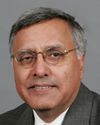We have to be a little bit careful here, because we're using stem cells in a very wide application. When we're talking about a Canadian public cord blood bank, at this point the application is specifically for what we used to call bone marrow transplantation, or blood and marrow transplantation.
Looking at that very small focus, cord blood offers a tremendous opportunity to offer transplantation to people who have rare immune types and thus are on wait lists for transplant and may not be able to have a transplant to treat their blood disorder, immune disorder, or cancer.
The issue with cord blood that you alluded to was that when you collect cord blood at the time of delivery, you collect roughly a cup of blood, and that amount of blood is used to “transplant” a baby or an adult. The cell dose is low. There is active research in the area to expand cord blood. We have now found out that we can use two cord blood units at once, and this has largely overcome our size issue. We in Manitoba and other Canadian transplant centres are using cord blood as a transplant option for adults now.




